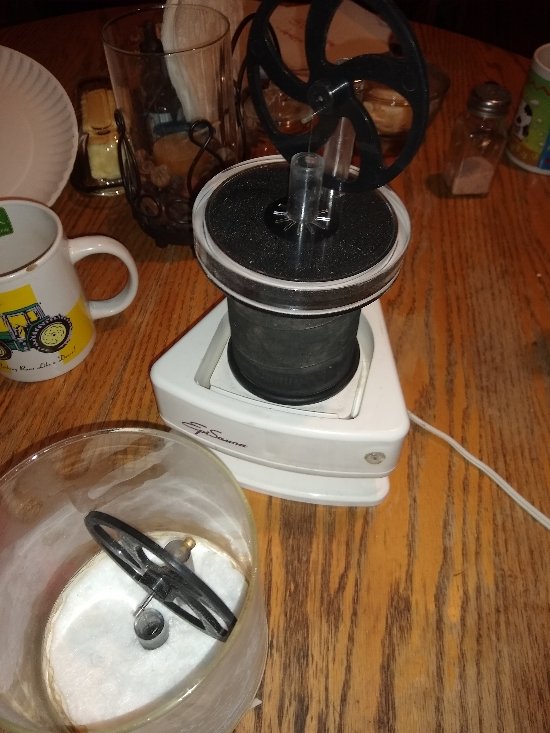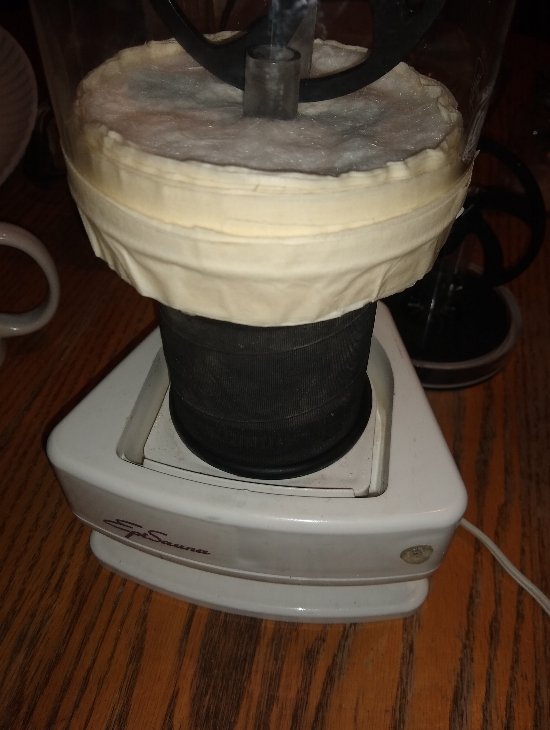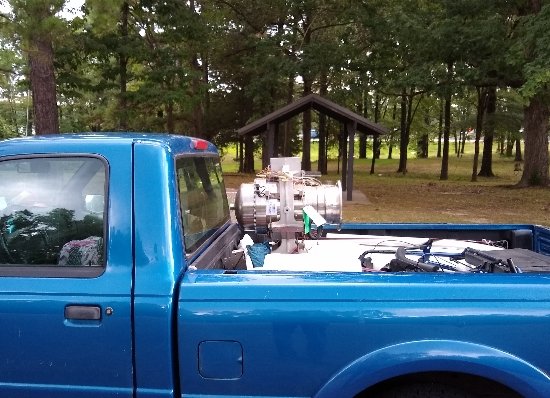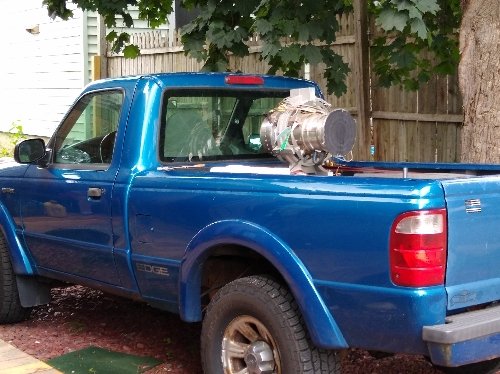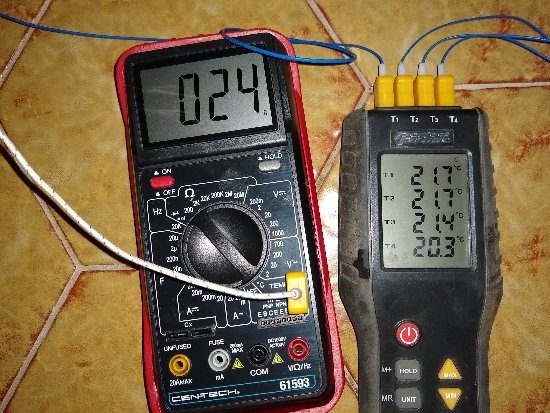-
Posts
456 -
Joined
-
Last visited
Content Type
Profiles
Forums
Events
Everything posted by Tom Booth
-
'Seems to be right". How would we know if an engine exceeded the Carnot efficiency? Ever? Has every engine ever built been carefully tested with energy input and output measured and compared to what exactly? How do I determine the Carnot efficiency of my toy LTD Stirling engine? Well, factually, out of the box. I cannot. Properly speaking, Carnot "efficiency" is a supposed property of the environment. The two "reservoirs'. The engine itself does not enter into consideration in any way shape or form. So I can calculate the supposed "efficiency" inherent in a supposed "reservoir" of heat elevated above a lower "reservoir". That is all. So, how do we determine the work potential of this upper reservoir? How much heat exactly does it contain? Infinite? Why it will never go any lower in temperature? Wild! Well what volumes of heat can I get out of this "reservoir" at any one time? 100 Joules? 1,000? 1,000,000? Doesn't matter, really? As much as I might be able to utilize? Hmmm. Sounds too good to be true but OK, if you say so. So what has any of this got to do with my engine? Nothing. How could I determine the actual efficiency of my engine? Not possible. As Carnot so-called "efficiency" is actually nothing but the temperature difference OUTSIDE OFF my heat engine, there is nothing anyone can do to actually challenge this fantasmagorical fantasy. It's "unfalsifiable". What is the Carnot efficiency of a cardboard box? Exactly the same as any engine. What about a fish bowl? The same. How about a pair of night slippers? The same. These "reservoirs" have no actual properties. No volume. No energy content. No quantity of heat that can actually be determined. How much heat is available from a "reservoir" at 212°F ? Well.... No way to know with just that information alone. The entire proposition is fantasmagorical and meaningless.
-
Of course, if we are going to get down to brass tacks and do an actual experiment, some sort of temperature regulator, electrical meter and so forth would be needed. You are resorting to a decent into character assassination. An ad hominem. I'm considering your opinions or point of view. I simply do not find your argument convincing. It has nothing to do with "belief". You made an assertion which IMO is not supported. You are at liberty to try and convince me of the correctness of your assertions. I'm listening. I think how and when and by whom a science was first established is a perfectly legitimate question not a "conspiracy theory". As far as dispersal or distribution of the heat energy. Sure. So what? That is what results in the expansion of the gas. The expansion work pushes the piston. Either the heat is used up doing work or it gets "rejected" to the sink. No mystery. Everything can be accounted for.
-
If using an electric heating element to maintain the temperature of the water? Something like 500 watts for about 15 minutes would be equivalent to 500kJ if I'm not mistaken. As I said, it's an arbitrary figure taken as an example, that's all. Edit: Getting out a calculator: About a minute and a half more 16.66666..... minutes
-
How do I know? Suppose for example there is an engine similar to the one in my experiment. There is a plate on the bottom (heat exchanger) for heat input. Suppose instead of a metal plate there is a small container of water, perfectly insulated on all sides except where in contact with the working fluid inside the engine. The water in the container is heated up by an electrical heating element to 100°C Ambient is 75°F That works out, using the Carnot efficiency limit formula to 20% So for every 100 Joules added to heat up the water, (to maintain it at 100°C while the engine is running) which heat has nowhere to go but into the engine and into the working fluid (ideally, discounting losses due to conduction of heat through the engine body) only 20% of the heat being added to maintain the water at 100°C can be utilized by the engine to convert into work output. The other 80% passes through to the sink or "cold reservoir". (According to the current interpretation of the formula being universally taught by academia today afaik.) So, choosing an arbitrary number of 500,000 joules of heat added to the water to maintain the 100°C temperature, for every 500kJ added to the water 400kJ should appear at the sink while the engine is operating, converting the other 100kJ to work output
-
Sorry but that explanation goes nowhere. Newtons laws of motion again. If a billiard ball, slow moving or otherwise strikes a stationary billiard ball, 100% of the force is transmitted to the second ball, subtract a bit for the sound vibrations emitted, friction on the felt table top, etc. but the second ball basically takes off at the same speed as the ball that struck it and the first ball comes to a stop. Rationalizations aside, where is the empirical data? Who did experiments that conclusively established this exact supposed limit? Not Carnot. He had no absolute temperature scale at that time. He only made assertions about "the fall of Caloric" The 500kJ figure is an arbitrary number. It could be added in whatever manner. One cycle or over however many. And I have no idea what you mean by "Now that you are talking to me again". Who said I stopped talking to you? My time is limited and I may not have gotten to every comment. I'm just one person. There are probably a dozen comments I haven't had time to go back and re-read and respond to. Sorry if yours was among them. I'm trying to keep up but as I say, my time is limited. What is it supplied to? The working fluid within the heat engine.
-
Maybe someone can explain to me how and/or why if I SUPPLY by heating, with some actual fuel or other ACTUAL, REAL, FACTUAL heat source, such as an electrical heating element 500,000 Joules of very palpable heat 400,000 joules of heat must GO MISSING or we are threatened with the dread "OVER unity" ??????? As I vaguely understand the so-called "Over Unity" concept, which I by the way DO NOT espouse in any way personally that would constitute a ratio of 500,000 Joules in and > 500,000 Joules out. 500,000 joules SUPPLIED by ME or my heating element or whatever and some additional amount supplied by the "Orgone energy" or some such preposterous nonsense. I'm in no way talking about getting something for nothing. I'm not talking about drawing energy from some Cosmic Either Force, background "Zero Point Energy" or any such similar nonsense. 500,000 Joules SUPPLiED. ACTUALLY supplied. What actual mechanism, force or power determines that only the completely arbitrary amount of (at least) 400,000 of those VERY REAL supplied quantities of measurable heat must end up at some specific place designated "Cold Reservoir". We are not talking about losses to friction or other known causes of inefficiency such as stale fuel, water in the grass tank, lack of lubrication, poor ignition, clogged catalytic convertor etc etc I'm not a physicist. Just a simple engine mechanic/repairman (person) Engine problems have causes that can usually be identified and repaired. This "Carnot Limit" has just, allegedly swept away 400,000 Joules of perfectly good heat for no apparent reason whatsoever. What rational basis is there for this mathematical derivation? I'm not talking about utilizing heat from one "reservoir" either. I'm talking actual ADDED heat above the surrounding ambient. If I lift up 500,000 gallons of water and let it run through a turbine can only 100,000 gallons be utilized to turn the turbine? But if I "lift up" 500,000 Joules of heat 400,000 Joules DISAPPEARS or allegedly MUST be unusable. BECAUSE?????? People THINK some guy 200 years ago declared it so (though he actually didn't, but if he did, at any rate, made a retraction). Well somebody later took what he said and tried to represent it as a formula? We are talking about a very real, measurable, palpable quantity of energy being forcibly abducted, conveyed across a distance "rejected" to the "Cold Reservoir". This is a singularly remarkable phenomenon without precedent in the annuls of science, is it not? When a very real quantity of energy is transported from one place to another without any apparent cause. "ENTROPY" ? I can see some losses as a result of "entropy", friction and so forth, maybe. Like resistance in electrical wires. Some small percentage of loss is inevitable. Unavoidable. Some heat will be conducted away from our heat engine, get through the insulation etc. Understandable. We are however talking 80% here. With NO Explanation other than a simplistic formula concocted two centuries ago originally based on a now discarded theory of heat and apparently reinterpreted several times as there was no absolute temperature scale when Carnot made his postulates. Nobody's talking about getting MORE out than what was put in or "overunity". We are talking maybe A Joule or two LESS UNDERUNITY. Maybe 500,000 joules in and 150,000 joules out, by maybe reducing parasitic heat loses or reducing friction or whatever. No "overunity" in that, as far as I can see. Where is the "overunity" in 500,000 Joules input and just 100,000 + 1 Joules output ? That is nowhere even close to "overunity" we are miles away from "overunity". What is the justification for this alleged MASSIVE deficit? If someone deposited $500,000 in the bank and then came back the next day and found that $400,000 had been mysteriously withdrawn, wouldn't that person be asking some questions? What does the teller have to say? Sorry sir, that's just ENTROPY. You may withdraw up to $100,000 minus some early withdrawal penalties and fees but your other $400,000 has disappeared as a result of entropy. Have a nice day!
-
What I mean is, by introducing cold water into a warmer environment, the water will heat up because of the higher temperature surroundings, AS IF placed in an oven, regardless of what the engine does or doesn't do. Still, some sort of small water bath or perhaps conductive gell on top of the engine under the insulation could add some thermal stability making the thermometric readings easier, but having the water colder than the ambient just introduces a new pretty wild variable and instability to the system. How to ensure a constant degree of coldness would be an issue. The source of heat that caused the water to heat up, which it certainly would do when introduced to a warmer environment, becomes less certain. etc. etc. etc. I've been thinking about how to deal with the displacer agitating the working fluid issue and may have come up with a solution. My tentative hypothesis is that I'm not seeing much heat at the presumed "sink" due to the engine converting the heat to mechanical "work" output as well as the specific sequence of expansion and contraction of the working fluid by the piston. Principally, the gas in the engine is being cooled down by the work performed during rapid (adiabatic) expansion. A comparison could be made by replacing the piston with a immovable plug in the cylinder and working the displacer with a servo mechanism. I've done something similar previously using the Arduino programmed to actuate a servo motor to move the displacer. This should replicate all the conditions excepting the compression and expansion of the working fluid by the piston.
-
My apologies. You are correct. Feel free to continue. I'm interested in seeing where you might be going with this. BTW, thanks! I've seen various PV diagrams probably a thousand times and kind of just assumed the Stirling cycle was more or less the same as the Carnot and I guess took the "constant volume" processes as adiabatic, since, how could there actually be any "constant volume" with a piston attached to a crank? Your comment has prompted me to look at Stirling's old patent drawings: A rather complicated linkage system there! Constant volume heat addition would make a heat engine, possibly, have more torque, more like an IC engine, if the heat and pressure had more time at TDC to build up pressure. It might be interesting to try and replicate this linkage system.
-
Well, Studiot has posted the PV diagrams for the Stirling and Carnot cycles (idealized). It should, I think be noted that BOTH include adiabatic expansion AFTER the removal of the heat source and isolation of the cylinder. BTW your images are not displaying.
-
Newtons first law of motion is a basic physical principle. To assume mass, friction etc. can be neglected would, I dare say constitute pseudoscience, or at least a departure from reality. BTW I noticed the thread has been moved to the "pseudoscience and speculations" department. The rules include: "Some kind of scientific model, comparison with evidence, specific predictions or other ways of falsifying your idea are a MUST. Consider the first question you must address as "How could this be tested to ensure that it's true?" That's what a model does it allows one to predict outcomes under specific conditions so that they can be compared with experiment." What I am asking is when and where have these common sense rules been applied to the Carnot efficiency limit equation? I can find no actual historic record of any such thing. This led me to ask the above question: "How could this be tested to ensure that it's true?"
-
You seem to be forgetting Newtons first law of motion.
-
Sure, I'm all ears.
-
So we need to record the time it takes for a certain specific quantity of cold water sitting in a container on the engine (not running) to heat up under the influence of ambient heat. Then, repeat the experiment with the engine running to see if there is a difference. I can see a problem with that. Is the steamer sauna running in both circumstances? If not then the conditions are not the same. The sauna machine emits heat to the general surroundings. Another consideration is the insulating factor regarding the displacer inside the engine that the water is sitting on working up and down (or not), agitating the air helping to bring up the heat or if idle, blocking the heat due to it's insulating properties, or even acting as a conductor. I'm thinking perhaps some very small heating element attached directly to the bottom of the engine would at least reduce the potential problem of the sauna heating up the entire surroundings and billowing steam. We really want all the heat supplied to go into the engine and ONLY into the engine.
-
Again, a container of cold water, colder than the surrounding ambient, would absorb heat from all sides and all directions. If covered with insulation we are back to the same issue of the adequacy, conductivity, thermal capacity, etc. of the insulation. Might just as well put a container of ambient temperature water on top of the engine and stick the whole setup in the oven. Relatively speaking it would be the same situation.
-
I can understand accessibility is a legitimate consideration that I should be more mindful of. Thanks for the recommendations. It may take more time as I only have the one small piece of Aerogel so can't make a side by side comparison running vs. not running. Starting out "colder than ambient" is interesting, but not sure how that could be implemented. Put the engines in a freezer? Wouldn't that just make the freezer compartment the effective "ambient". Also, a cold engine, if taken out of a freezer just before the experiment would not be equalized in temperature with the surroundings and would take in heat from all sides and all directions making it, I should think, virtually impossible to monitor or determine with accuracy where the heat might actually be coming from or how much from what source or through what medium. Getting a baseline for the time it takes for a frozen engine to warm up is interesting though. I'll give it some serious thought.
-
My efforts to present evidence have been continually and systematically thwarted. The evidence is primarily in the form of video recorded experiments. I'm not making any "claim" other than I've made such and such observation. Here is a video recording of my observation/experiment. I am here, because I would like to get the views of others on the matter. I'm going to run an additional experiment, or series of experiments using temperature probes as recommended by another forum member here. Should I refrain from recording these subsequent experiments? Refrain from posting additional video? It seems that is the case. When I post an experiment, a visual record of my procedure, and I'm here to elaborate on, answer questions, implement improvements in methodology and so forth, cooperating, considering any and all alternative explanation and points of view etc I get slapped with a moderator note, warning, demerit, locked threads, three day ban or just general insult and ridicule directed at my character and motives Why Tom is an "Over Unity" crank. A "perpetual motion" nut. An incompetent ignoramus who doesn't understand the terminology etc. etc. Video of a seeming anomaly is forbidden but personal insults against the presenter of the evidence get a pass. Andrew Hall is, or was a respected member of the Stirling Engine Society. Secretary I believe. Anyway, he recently posted an interesting demonstration/experiment. I would like to cite HIS video recording, including actual pressure and volume recordings, but am, under the circumstances reluctant. If interested, I have devoted a thread on the SE forum to Hall's experiment, comparing the results of his with mine. The thread there parallels this thread, but the SE forum has no restrictions or aversion to posting video. I arranged a different setup for the next experiment using the temperature probes and did a kind of trial run, which gave some interesting readings (using the temperature readout on the thermal camera, I haven't drilled holes in the engine for the probes yet) It looks as though the new arrangement should work better, I placed a section of truck radiator hose on the steamer pot to confine the steam to the bottom of the engine better and avoid having steam rising up through and possibly get under the Aerogel blanket on top of the engine. https://stirlingengineforum.com/viewtopic.php?f=1&t=5497&sid=250a18d1aa52cce976579e3231fbb182#p18487 Edit: Sorry, I forgot I already posted here earlier about the radiator hose modification. If I may, here is the Hall demonstration video:
-
I've asked around at local auto parts stores but haven't found one so no. Not yet. Any recommendations? Anyway how could work output be determined by the RPM? First of all I think I'd need a smoother running engine as these toys with twisted wire for connecting rods and floppy displacers etc. don't always run at a steady RPM but can hang up and slow down or suddenly speed up for a while. I do have several other engines though.
-
Well I've read that through several times but, first, I don't think what I've said constitutes "extraneous detail". Second, I can't say I can see any real "beautiful symmetry" to be broken. All I see really is a scheme that has no possibility of working for practical reasons too numerous to go into. I can't honestly even begin to take the proposition seriously (sorry, no offense but what can I say?) I look at it and see, first of all "absolute zero" and right out of the gate your talking an impossibility, conceptually, even as an interesting thought experiment. Just as an example of what crosses my mind, well, matter itself, at absolute zero changes state taking on a form that is in no way conducive to building machinery. The elements a Stirling engine generally needs to operate have long since ceased to exist, well before getting anywhere close to absolute zero. I don't even believe Stirling engines operate in a way that would allow such stacking, one on top of the other as proposed. I could be wrong I suppose. Maybe some such system could be approached using hermetically sealed engines pressurized with helium using solar radiation and the cold of space but then no need for a stack. One engine should do. Maybe you could elaborate or persuade me to see the light or something somehow but I'm just not getting it at this point. Maybe I could get away with posting a video I thought was rather interesting (without getting banned I hope?) I've talked with this guy many times over the years. Online as well as by email and on the phone. But he says a couple of times in this video that he doesn't know anyone working on the stuff he talks about in this lecture. I'll try to give him the benefit of the doubt and say maybe he's just got a bad memory or something, but... I also think he makes some real miss-statements, like Tesla never talked about heat pumps in his article or in connection with his engine, I guess he didn't actually read the article too carefully, or doesn't understand that a refrigeration system and a heat pump are basically the same thing. So he bundles up a lot of stuff he and I have been discussing for years and gives a lecture hawking "angel investors" but doesn't know ANYBODY who is actually working on any such thing. Nobody at all. Oh well. Some food for thought anyway in connection with all this: BTW I'm in no way "depending on" this video for anything. IMO the guy is leaning pretty heavily on ideas he got from me over the years. Anyway, knowing something about refrigeration systems and compressor-expanders and all that I thought you might find it interesting, but it really kind of just pisses me off when he says he doesn't know me, or "anyone" that has ever done any work on this kind of thing. Anyway, getting back to the experiment, I've made, what I think are a few minor improvements. I found a section of truck radiator hose that fits the well on the steamer pretty snug. Elevating the engine on the tube helps contain the steam, keeps the glass from fogging up and, well, I had hoped the steam would condense and drip back down and not boil away as fast, but, the steam still builds up pressure and boils away, but maybe not quite as much. I taped the glass globe right to the engine which protects it from drafts and from steam. Before steam was rising up through the crack in the insulation which could get under the Aerogel. Not really much more to report than that at this time but I'm working on it. Well, I also spent some time trimming the fibers under the flywheel away with some scissors so the flywheel can rotate more freely and did a few test runs to see how all this worked. Better anyway.
-
At the cold end of the Stirling engine, how much heat is actually being dumped into the accumulated cold reserve? Considering some portion at least of the heat is converted to - whatever. Something that's no longer heat. Drive machinery, generate electricity etc. That cold reserve isn't going to warm up in a big hurry. Maybe. So you have the Stirling engine running primarily on cryogenic or near cryo-cold. The supply of Ambient heat in atmospheric air is almost free for the taking. The engine converts that heat into work so is a kind of refrigeration system of a sort. The heat that goes in doesn't "ALL" end up at the sink. So, to whatever degree that happens, heat converted to work output, the cold reserve is preserved as the engine runs on ambient heat. Tesla worked on the same idea but wanted to take it (the air) all the way down to phase change (liquid air). Personally I think that's going to extremes and unnecessary and probably not really very practical.
-
Not an accumulation of heat. Air-cycle refrigeration is used for cryogenics. Not particularly an endorsement, I just Googled up "air-cycle" + cryogenic and - well -256°F so they say on this companies website: https://mirai-intex.com/products/open-cycle/c1 Incidentally, also producing heat at something like 450°F https://www.sciencedirect.com/science/article/abs/pii/S014070071100079X But unlike household refrigeration where the refrigerator is laboring to extract miniscule amounts of heat from a cold insulated box, an open air-cycle compresses a fresh supply of ambient air (heat of compression) continuously. That is it takes in a fresh supply of WARM air compresses it to get out the heat, then expands it to extract work and produce cryogenic cold. Now if you have a Stirling engine taking the heat and converting the heat into work, the Stirling engine does part of the cooling which contracts the compressed air, as is is being compressed, which makes compression that much easier, aside from the work output from the expander helping.
-
The funny thing is I still know the contractor. Talked with him not long ago actually. A 3000 watt "NASA" type solar dish Stirling generator was available for purchase, but way out west. Built under government contract I believe, by one of my friends competitors. INFINIA. A prototype "test engine". I thought he might be able to help arrange shipping if I bought it, or perhaps he would want to get it himself. I couldn't see letting it just slip away. My understanding was all those utility scale engines were sold to China for scrap. This one had been stashed away in some university back room and never used since 2008 or some such thing. While I had his ear I asked whatever happened with his project with the Stirling engine. He changes the subject, then says he has to go on a trip and talk later, but never does. I really get the impression the whole topic is "classified" or some such thing. Originally he had given me the impression the Stirling project was something he wanted to do on the side, for homeowners. The reason for the small dish was not to be too obtrusive in people's residential area back yards. Anyway, I ended up driving out from New York to Colorado to pick up the engine. Made a vacation out of it. Why not just stop there? Where are you getting the 300 kw input?
-
Thanks, that clarifies things. So some form of "bootstrap" system? The expansion turbine drives (assists in driving rather) a turbo-compressor I'm assuming. Are you familiar with air-cycle systems then? My journey down this "rabbit hole" started when I was working on designing a solar parabolic dish powered Stirling engine for a military contractor, I think back around, I don't know exactly. 2006-7-ish I'm guessing. The contractor wrote back to me that the contract or whatever, apparently using my design idea I had labored on for weeks or months, "violated the second law of thermodynamics", according to (whomever), my contractor friend did not supply me with much information. My design incorporated a kind of bootstrap (open) air-cycle cooling system. In the process of designing this thing I "saw" hot air boiling off the focal point into the air and thought what a big waste of heat. I believe now, the government was taking bids for a tactical multi-fuel/solar generator for use in Iraq or Afghanistan of some god awful hot desert somewhere. So it had to be as compact and efficient and inconspicuous as possible. That is the dish had to be as small as possible, so I was trying to get as much heat from the dish as possible, thus, air ports around the focal point to suck up this bounty of hot air going to waste. Why not? It could be compressed some, making it even hotter, the cold exhaust from the expander would, of course help cool the back of the heat engine. Well, running the system in my imagination for hours on end, eventually the sun went down (in my imagination) but the cold side of the engine was already super cold by that time and the air warm, and compressed, it would still be hot. I didn't really THINK, but "saw" in my imagination that the engine kept running after dark, just by compressing the ambient air for heat and using the exhaust from the expander to maintain the temperature differential, at least for a while, into the night, without the sun. With luck it might keep going till the sun came up again. Maybe it didn't need a dish in the daytime either. Maybe just to get it going. Once a differential was well established it seemed it just wanted to keep going. Without the contract though, I sure don't have the money to build anything like some kind of Stirling-turbine, which is what I started calling it. To say I was a little disappointed is putting it mildly. I decided I had to find out what this "second law" business was about and why my engine that was running just fine in my head supposedly "violated" it. Of course, my research traced back to Carnot.
-
No, not the word "cycling". I was just unsure what the 300°k applied to (in the real world). From your current elaboration it seems 300°k is the ambient temperature the heat pump is operating in. ("Path BC implies an ambient temperature of a little less than 26.9 oC which is the fixed point for the system.") 26.9°C = 300K So the heat pump/refrigerator is operating in a 300°k environment, is that correct? And taking the temperature of the refrigerator down to 250°k ? Umm.. freezer? That's really cold. But you say also: "Point C is after heat exchange to atmosphere, still at 10 bar, temperature now 26.9 C" I assume you mean heat exchange from... atmosphere. (?) But the system is drawing heat from the freezer box at 250°k not atmosphere. It has to dump the heat into the 300°k Sorry if I'm groping a bit with all this. I think in terms of Fahrenheit and have to convert Celsius and Kelvin to make sense of anything. I'm also trying to figure out if your example/calculations make sense in a real world application. It seems from what you have described that the refrigerator condenser will be just 311°k dumping heat into a 300°k environment. On a hot day could this refrigerator still function? You say "turbine". What type of refrigeration system are we talking about? As far as I understand the forum rules, it is apparently forbidden to bring up a "closed" topic. I believe I was previously banned from the forum as a result of just mentioning a YouTube video of one of my experiments that I had previously posted (in a topic that was closed), so I'm kind of in a bind and I'm probably already walking on thin ice with this topic as well, I imagine. You might want to look for me on the Stirling engine forum and ask questions there. In this thread I'm just trying to find out basically, If I supply 500,000 joules of heat to a Stirling engine and the Carnot efficiency limit calculations reveal that at best, only 100,000 joules of that heat can be converted to work, why can't I seem to find the other 400,000 joules? Why is my engines "sink" not heating up more than it appears to be, especially when smothered by insulation? Maybe it is heating up under the insulation. So why doesn't it stop running? So... I'm drilling some holes in the dang thing and inserting temperature probes everywhere I can to hopefully find out what's really going on. I don't really understand exactly why finding that the engine actually utilized one hundred thousand and one joules and only "rejected" 399,998 joules all known laws of the universe would suddenly burn to ashes or something.
-
Interesting, though I don't really understand what you are doing, or trying to do. What do you mean by "between 300K and 250K"? For a refrigeration cycle? Initially a refrigerator sits in a room at let's say 300k (uniform temperature). So what does 250k and 300k represent in the real world and which way is the heat being pumped? For example, are we pumping heat out from a 250k refrigerator box to the 300k environment or from a 300 K environment to a 250k water tank to warm water to take a bath? In other words, what is the initial temperature before plugging in the heat pump/refrigerator and which way is the heat being moved? A refrigerator has a condenser that heats up, hotter than the ambient and an evaporator that cools down below the ambient, so is usually not "operating between" those two temperatures. Rather it would be operating in, say, a 300k environment to create a refrigerated space in an insulated box, dumping all the heat into the 300k environment to create a lower temperature in a refrigerated space. To do that, the condenser coils would have to be much hotter than the 300°k the heat is being moved into. Maybe 375°k ? If that were the case, how big is the refrigerated box? How long does the unit have to run to bring the temperature down 50° ? How well is the box insulated? If instead we want to quickly warm cool well water from out of the ground from 250°k up to the ambient 300°k would that take more or less energy than the reverse process? I'm taking heat from a warm environment (ambient air at 300k) and dumping it into a cold environment (water at 250°k) Or, was it 275°k ambient to generate 250°k and 300°k at the evaporator and condenser respectively? Then the heat pump would be operating "between" ???? Well, literally, between 275°k and 275°k just pulling heat from point A and dumping it at point B. Needless to say, I think everyone could agree it is easier to push a car along a flat plane than to push it up a hill and we'll, down hill really takes no effort at all.
-
Came up with some temperature probes. A "perfect prime" with four and a multimeter makes one more. Not great and not all in 100% agreement on the temperature, but within a few degrees C. The multimeter reads a little high and probe #4 seems to have a bad connection reading a little low or sometimes way off or goes blank entirely but comes back and reads good if I wiggle the connector but is not reliable. Response time for the multimeter is real slow. The perfect prime is better, but the refresh rate of the digital display takes a second. I can probably get some average temperatures from several points on the engine simultaneously. Not much hope of getting real time temperature changes of the working gas with compression and expansion with these, but we can see what we can see I guess. Suggestions about where to place the leads etc. are welcome.


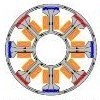
.gif.c89d3ebf281bd8fa29acf596f40aa3fe.gif)
